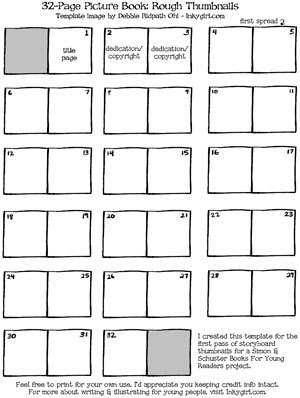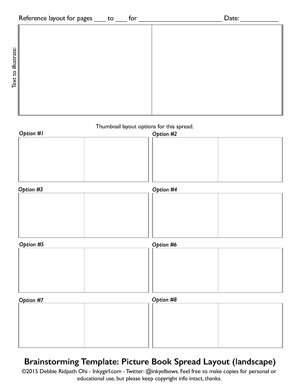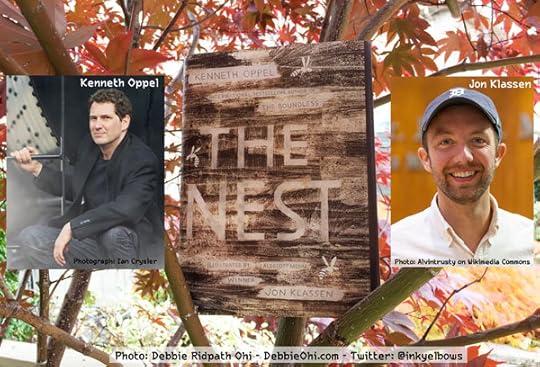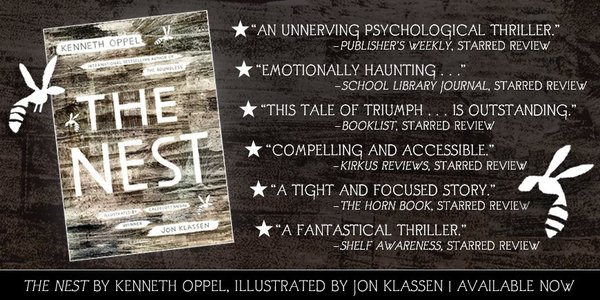Debbie Ridpath Ohi's Blog, page 54
November 4, 2015
Writers & illus: How you live your life affects your work, so make sure you have one. A life, that is.
Free Picture Book Thumbnail Templates for Writers and Illustrators
 With some sketches for picture book NAKED! (Simon & Schuster Books For Young Readers, author Michael Ian Black)
With some sketches for picture book NAKED! (Simon & Schuster Books For Young Readers, author Michael Ian Black)
When I was asked to illustrate my first picture book (I'm Bored) and I started researching picture book formats, I was confused. I knew a standard picture book had 32 pages, for example, but I discovered that these 32 pages might also include the title page and other non-story pages. Plus some books had the story beginning on the right-hand page while others started on the left.
WHERE SHOULD I BEGIN? My editor and art director helped guide me and even though I still get confused about terms like "self-ended" and "paste-down," I'm gradually learning. For expert explanations, see the resources I've listed at the end of this post.

How Many Pages? Here's What I've Learned So Far...
The number of pages varies in a picture book; it depends on the publisher as well as the project. If you're submitting a picture book dummy or paged out picture book mss, however, I'd suggest starting with the standard 32 pages. If you really need the extra room, go for 40...but keep in mind that the more pages a book has, the more expensive it will be to print. The reason that the number of pages in picture books tend to be in increments of 8 is because of the way they're printed; see resources at the end of this post for more info.
See below for the informal templates I've created for myself; I'm providing them here in case some of you find them useful in your own brainstorming process. The first two are templates I've used to brainstorm story layout for picture books. The squares are tiny on purpose, so I can squeeze the entire layout onto one page to make it easier for me to see overall visual flow. These early sketches are usually stick figures and only the essence of emotions and gestures; I don't bother with details.
Feel free to download/print any of the following for personal use:
 32-Page Template
32-Page Template[image error] 40-Page Template I used for illustrating NAKED!


I created the last two brainstorming templates for when I'm coming up ideas on how to illustrate a particular spread. For example, suppose the first page text was "The squirrel was surprised." and the second page had "He ran away." My sketch ideas could be something like this:
[image error]
For illustrations that are a full spread, I just ignore the gutter line. If there are two or more spot illustrations on a page, I draw very very tiny (I use a Sigma Micron 01). If there is a lot more text than I can or want to write out in the top bit, I just write a few words or phrase to remind me.
For the final choice, I'll sometimes mix and match -- I may like the first sketch I did in Option #3 but prefer the second sketch from Option #4, so I'll combine them.
Anyway, this template helps encourage me to explore different ways of illustrating a spread and NOT to just go for the first thing that comes to my mind. When I've made my choice, I'll take the thumbnail sketch idea and work it into a bigger sketch; I usually scan the page and then crop out the particular thumbnail that I want -- that way I can preserve the original energy/feel.
This brainstorming phase is the only time I work low-res. After this, I usually switch to high-res (full dimensions), even for early sketches, just in case I really like (or my art director or editor) really likes some aspect of the early sketch.
For more free print-ready material, see Debbie's Print-Ready Archives.
Other places where you can find more picture book layout templates and useful info:
If you know of other useful resources, please post them in the comments below, thanks!
An Illustrator's Guide To Creating A Picture Book - by Meghan McCarthy. No templates, but a good overview for those who are just starting out.
Picture Book Dummy, Picture Book Construction: Know Your Layout by Tara Lazar. Explanation of self-ended and colored ends picture book layouts.
Basic Book Construction by Editorial Anonymous. Includes info about why most picture books have 32 pages.
Picture book layout templates by Scott Franson. 32 page + endpaper in portrait, landscape and square formats.
Harold Underdown's The Purple Crayon: includes a TON of info about children's book publishing, especially the basics for those just starting out.
Picture Book Standards: 32 Pages - by Darcy Pattison







November 2, 2015
Advice For Young Writers, Traveling Office Space and BRAZEN: Christina Farley Answers Three Questions

CHRISTINA FARLEY is the author of the Gilded series, a YA contemporary fantasy series set in Korea. GILDED was nominated for Korea’s 2014 Morning Calm, Ohio’s 2015 Buckeye award, and the Tome’s It List. As a child, she loved to explore, which later inspired her to jump on a plane and travel the world. To learn more about this series, visit the Gilded Series website.
Christy is also one of my awesome writing critique partners, and I continue to be grateful for her advice, encouragement and friendship over the years.
[image error]
You can find out more about Christina and her work at ChristinaFarley.com, on Twitter at @ChristinaFarley, on Youtube, Facebook, Tumblr, Goodreads and Instagram.
Synopsis of BRAZEN (third in the Gilded trilogy from Skyscape):
Jae Hwa Lee spent her sixteenth year in Seoul, trying to destroy the evil immortals who had been torturing her family for centuries. The last thing she expected was to be forced to become their assassin. Trapped in the darkest part of the Spirit World as a servant to the Korean god Kud, fighting to keep her humanity, and unable to contact her loved ones, Jae Hwa is slowly losing hope. Kud, god of darkness, will do anything to keep her as a pawn in his quest for power over all of Korea, her entire family thinks she’s dead, and Jae’s true love, Marc, believes she is lost to him forever.
Q. Could you please take a photo of something in your office and tell us the story behind it?
Though I have a desk space, I don’t actually have one spot where I write. Partly because I am a mom so every second is valuable. You’ll find me sitting in the car rider line and writing. Or on the sidelines during soccer practice hacking away. I also write while we are traveling on family trips and my supportive husband takes the wheel.

Another reason I write in different locations is there have been studies that changing a person’s location stimulates the brain. There’s a great NY Times article on this here. So whenever I get writer’s block or feel like my writing gets in a rut, I’ll move to a different room or head over to the library or park.
[image error]
Q. What advice do you have for young writers?
My advice to writers at any age is to become experts in their field. How to do that? Here are some starting ideas:
1. READ! One of the most powerful ways to acquire knowledge on the market is to read and read widely.
2. WRITE- You must write to be a writer. Sounds simple, but it isn’t.
3. ATTEND Workshops- There are many organizations that offer writer workshops where you can learn the craft. For myself as a young adult author, I attended the SCBWI workshops and learned from published writers. If you can’t afford to pay for these, go to your local library to see what types of writing workshops they are offering. I also create videos for writers with advice and tips here.
4. BE DETERMINED- To really make it in this business of writing, it takes more than talent. It takes a determination that overcomes all those feelings of failure.
I have this plaque on my mirror. Every morning when I go to brush my teeth and brush my hair I see it.
[image error]
Q. What are you excited about right now?
I have a middle grade called PRINCESS & THE PAGE coming out fall 2016 with Scholastic Press that I’m super excited about. I traveled to France with my sister and when we visited the most enchanting castle, Chenonceau, I knew that I would write a book set there.
PRINCESS & THE PAGE, a middle-grade novel about a girl whose dark fairy tale comes to life after writing it with a magical Word Weaver pen.
[image error]
------
For more interviews, see my Inkygirl Interview Archive.







Comic: Productivity Tip For Writers, Sort Of
November 1, 2015
Comic: Daylight Saving Time writer
Tip: Write first, edit LATER.
[image error]
This is something I've been struggling with for years. My tendency is to try editing as I write and while this works for some writers, I know, I find that it bogs me down to a snail's pace.
What I'm trying for my new middle grade novel: to do a lot of in-depth prep and thinking about the structure ahead of time, hammer out a VERY rough first draft, and THEN revise.







October 31, 2015
A comic for others starting NaNoWriMo tomorrow
[image error]
Good luck, everyone! I'm "inkygirl" on the NaNoWriMo website, but I'm not sure how far I'm going to get in my novel since I'll be away for part of the month and also have a book deadline. :-\
BUT I just found out that you no longer have to start from scratch to participate in NaNoWriMo. You can also be working on outlines and other types of writing.







October 30, 2015
Comic: A NaNoWriMo Halloween
October 29, 2015
Comic: Death and the Writer
THE NEST by Kenneth Oppel, illustrated by Jon Klassen

I read middle grade novel THE NEST (written by Kenneth Oppel and illustrated by Jon Klassen) in one sitting last night. Totally lives up to the hype. I'm a horror fan and this was genuinely scary, with tension and dread gradually building to a nightmare-inducing climax. Yowza.
If you or your 8-12 year old are looking for a good Halloween read, I strongly recommend THE NEST.
Published by Simon & Schuster BFYR in the U.S. and by HarperCollins in Canada.






































